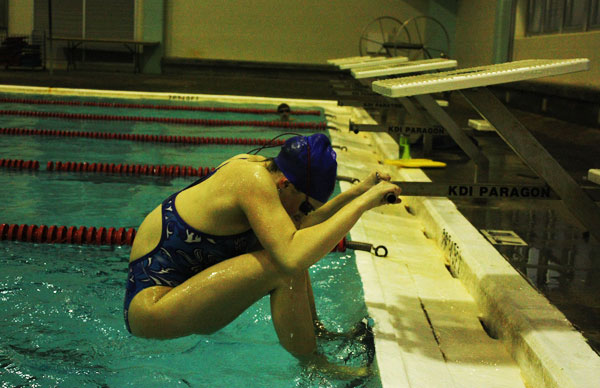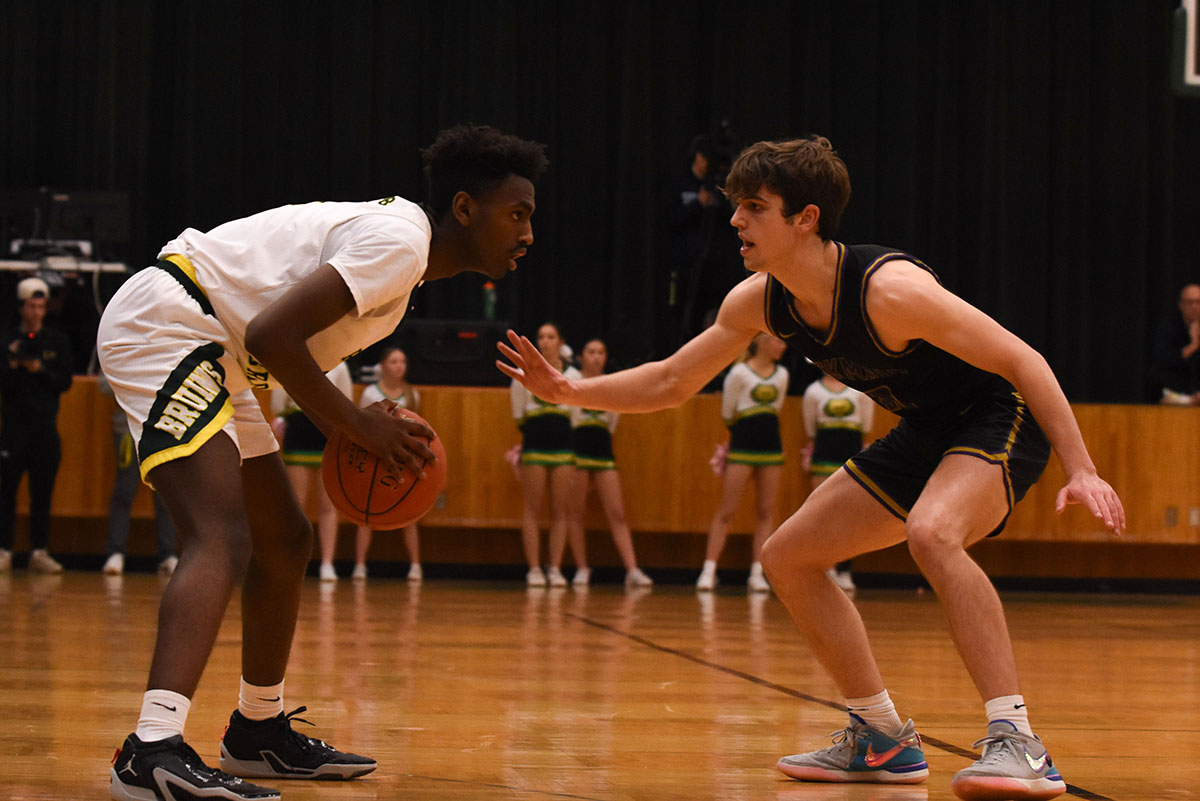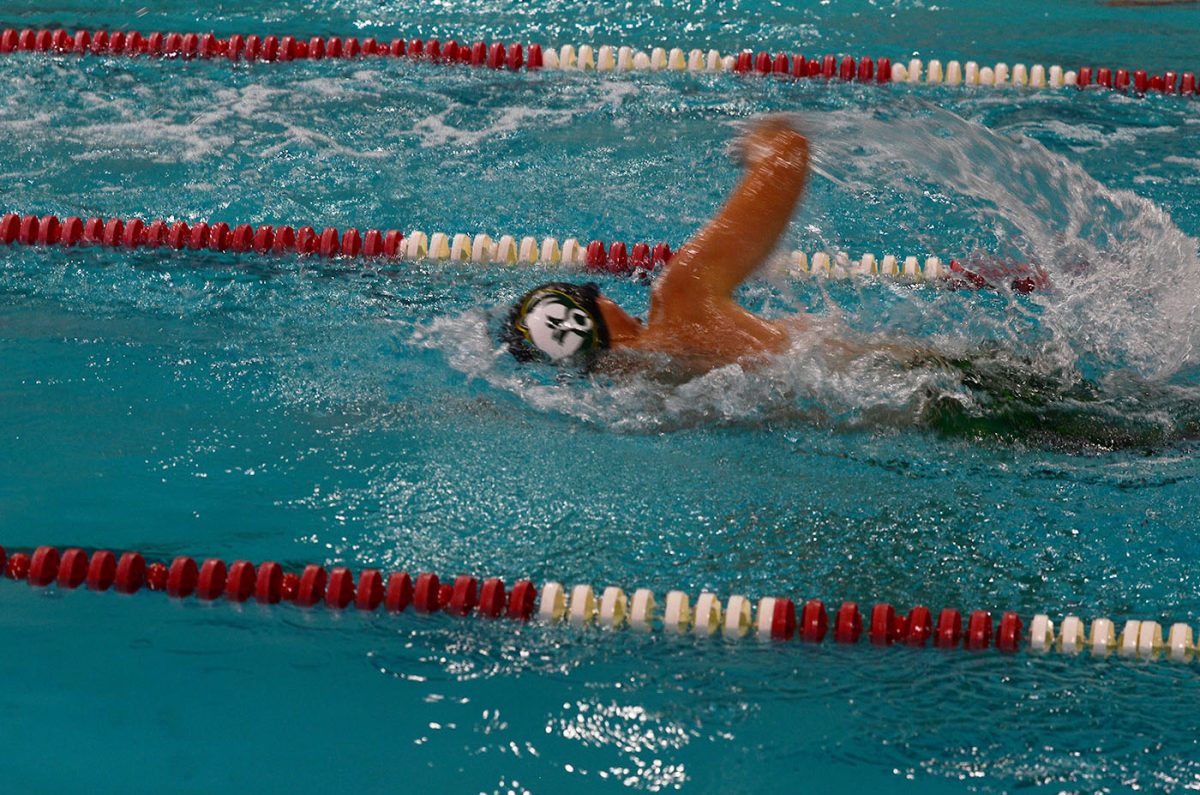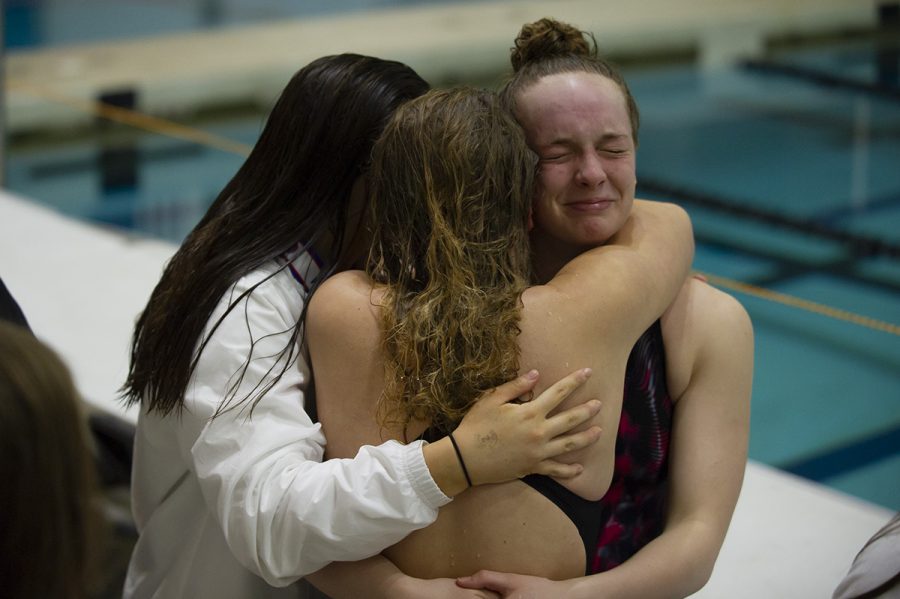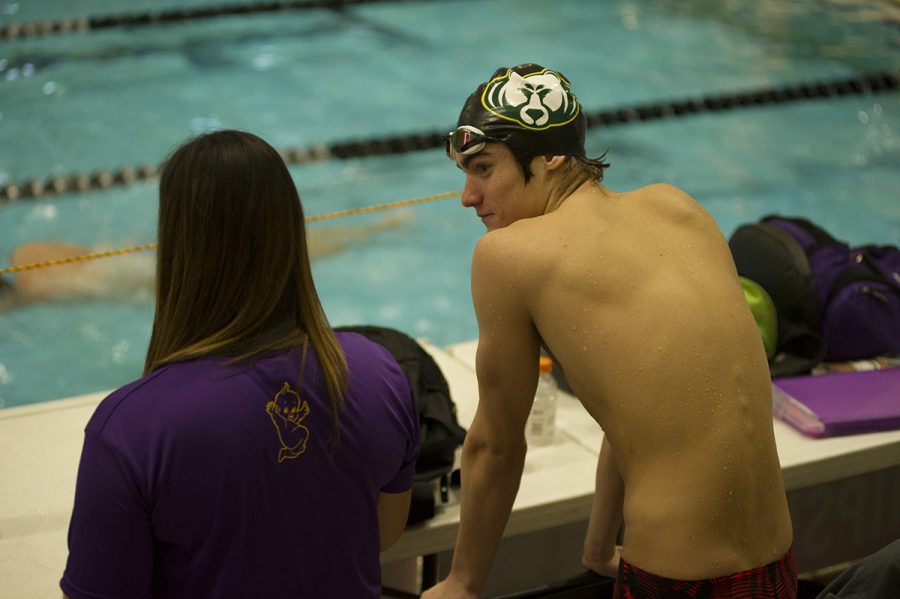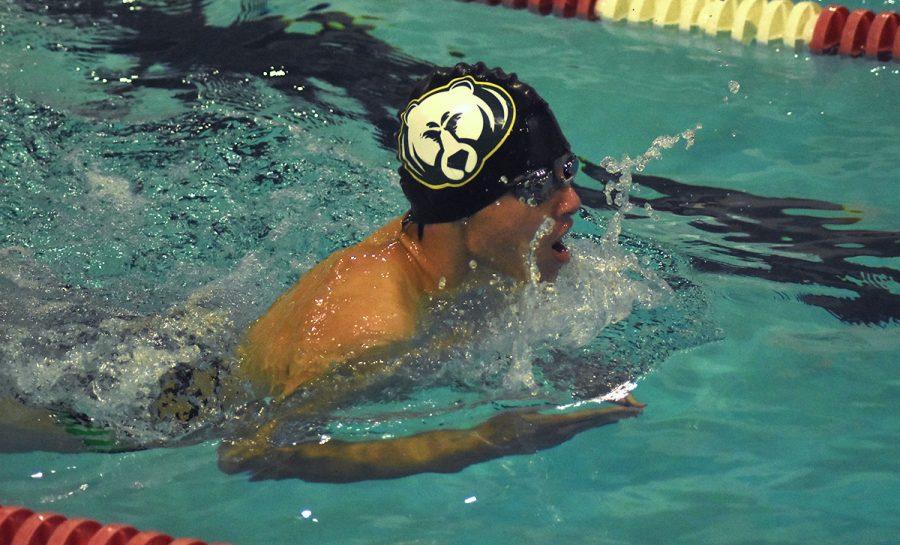 For 11 girls on the high school swim team, the practice schedule doesn’t end at the six practices a week scheduled by high school coach Karen Steger. Instead, these swimmers work out five times with the high school team, missing a Wednesday morning swim, and four times with Columbia Swim Club for a total of nine practices each week.
For 11 girls on the high school swim team, the practice schedule doesn’t end at the six practices a week scheduled by high school coach Karen Steger. Instead, these swimmers work out five times with the high school team, missing a Wednesday morning swim, and four times with Columbia Swim Club for a total of nine practices each week.“If they are only swimming high school, they’re not getting in nearly as many yards as they would if they were doing CSC,” Steger said. “We don’t want them to peak right away and [rather] let them peak at a better time in the season. If we cut out all their yards right now, everybody’s going to swim really fast. But it will all go away eventually, because they won’t have any aerobic base left.”
The mix of club and high school workouts can become difficult for the swimmers with the number of 5:30 a.m. practices they must attend on a weekly basis. In order to stay motivated, sophomore Lily Salzer keeps her mind on her aspirations.
“I’m really goal-oriented so definitely my goals drive me to come to practice,” Salzer said. “Sometimes waking up early for all these practices does get pretty difficult but I’ve never been tempted to stop.”
Salzer’s aims to place in the top five in the 100 butterfly at the state meet and to be on a relay that places first in the state. For her to maintain her training, she must not only work hard in the pool but also not lose focus out of the pool.
“I have to be careful about nutrition and hydration because those are two things that really get to me when I don’t do them right,” Salzer said. “That’s something I’m constantly thinking about.”
For the swimmers who only practice with the high school team, the absence of a portion of their team once a week has a minimal effect. Steger said the only difference is the girls have more room to spread out.
The girls missing a practice “really doesn’t seem to have any effect. The first week, because there was a CSC meet, they were gone almost every day, and if that had continued there would be a problem,” Steger said. “Now that [the team] sees that they’re here basically every day, I think that it helps, and I think in the long run it will make more people want to get involved with swimming year around.”
For junior Annie Rumpf and the members of the team that do not do extra practices, the value of the work some of their teammates are putting in is obvious, as long as none of the girls get too tired.
“If their extra practices are benefiting their swimming and making them faster and work harder, then it can only benefit the team,” Rumpf said. “If it’s making them exhausted, it’s probably not a good thing. I think it’s something they just need to evaluate on their own.”
Rumpf understands the motivation necessary to practice nine times a week must come from internal goals. However, for her a balance of activities is more important.
“It really depends on your goals. If your life is swimming and that is the thing you dedicate most your time and most of your effort to, then it’s worth it to practice that much,” Rumpf said. “If you have a lot of other stuff you’re juggling in your life, then I think it’s better to have a balance with your other activities.”
The cooperation between the high school and club teams is more prevalent than it was in past years. Steger believes this will help the high school program improve upon last years’ performance at the state meet.
“In order for the program to be successful you have to have [the high school and club teams] working together. In the past it didn’t work very well when the two head coaches weren’t getting along,” Steger said. “I think it only helps that we get along and work together; we have the best interest of everyone in mind.”
The team demonstrated its potential when the girls won the Columbia Invitational and placed second at the Ozark Invitational. Their next meet is Jan. 28 in Springfield, Mo.
By Thomas Jamieson-Lucy












































































